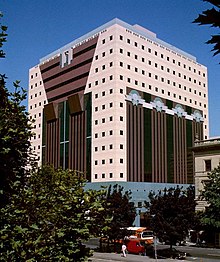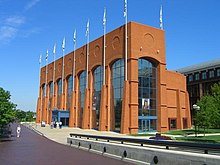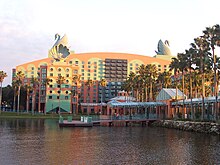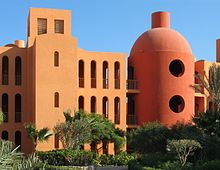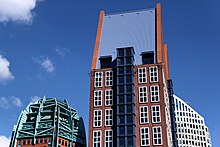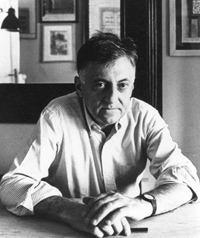
Aldo Rossi was an Italian architect and designer who achieved international recognition in four distinct areas: architectural theory, drawing and design and also product design. He was one of the leading proponents of the postmodern movement.
Alessi is a housewares and kitchen utensil company in Italy, manufacturing and marketing everyday items authored by a wide range of designers, architects, and industrial designers — including Achille Castiglioni, Richard Sapper, Marco Zanuso, Alessandro Mendini, Ettore Sottsass, Wiel Arets, Zaha Hadid, Toyo Ito, Hani Rashid, Tom Kovac, Greg Lynn, MVRDV, Jean Nouvel, UN Studio, Michael Graves, and Philippe Starck. The Alessi company in the UK is worth around £2.4 million.
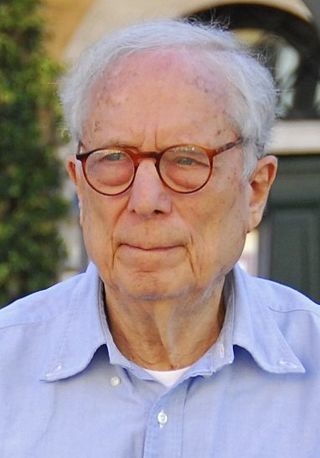
Robert Charles Venturi Jr. was an American architect, founding principal of the firm Venturi, Scott Brown and Associates.
Brutalist architecture is an architectural style that emerged during the 1950s in the United Kingdom, among the reconstruction projects of the post-war era. Brutalist buildings are characterised by minimalist constructions that showcase the bare building materials and structural elements over decorative design. The style commonly makes use of exposed, unpainted concrete or brick, angular geometric shapes and a predominantly monochrome colour palette; other materials, such as steel, timber, and glass, are also featured.
Charles Willard Moore was an American architect, educator, writer, Fellow of the American Institute of Architects, and winner of the AIA Gold Medal in 1991. He is often labeled as the father of postmodernism. His work as an educator was important to a generation of American architects who read his books or studied with him at one of the several universities where he taught.
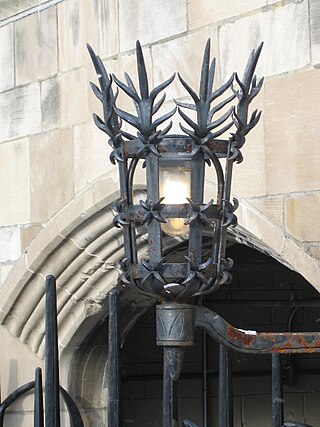
Samuel Yellin (1884–1940) was an American master blacksmith and metal designer.

Postmodern architecture is a style or movement which emerged in the 1960s as a reaction against the austerity, formality, and lack of variety of modern architecture, particularly in the international style advocated by Philip Johnson and Henry-Russell Hitchcock. The movement was formally introduced by the architect and urban planner Denise Scott Brown and architectural theorist Robert Venturi in their 1972 book Learning from Las Vegas. The style flourished from the 1980s through the 1990s, particularly in the work of Scott Brown & Venturi, Philip Johnson, Charles Moore and Michael Graves. In the late 1990s, it divided into a multitude of new tendencies, including high-tech architecture, neo-futurism, new classical architecture, and deconstructivism. However, some buildings built after this period are still considered postmodern.

Robert Arthur Morton Stern is a New York City–based architect, educator, and author. He is the founding partner of the architecture firm, Robert A. M. Stern Architects, also known as RAMSA. From 1998 to 2016, he was the Dean of the Yale School of Architecture.

Carrère and Hastings, the firm of John Merven Carrère and Thomas Hastings, was an American architecture firm specializing in Beaux-Arts architecture. Located in New York City, the firm practiced from 1885 until 1929, although Hastings practiced alone after Carrère died in an automobile accident in 1911.

Morris Adjmi Architects is a New York City-based architecture and interior design firm that provides design services to corporate, commercial and residential clients.
Francis Costigan was an Indiana architect known primarily for his work in Madison, Indiana and Indianapolis. He worked primarily in the Greek Revival style.

Bohlen, Meyer, Gibson and Associates, or BMG, is an architectural firm based in Indianapolis, Indiana. It was founded in Indianapolis on April 10, 1853, as D. A. Bohlen, Architect by Diedrich A. Bohlen, German immigrant. In 1884, after Diedrich's son, Oscar D. Bohlen, joined the firm it was renamed D. A. Bohlen and Son. Four successive generations of Bohlen architects have worked at the firm: Diedrich A. Bohlen, Oscar D. Bohlen, August C. Bohlen, and Robert L. Bohlen. The firm specialized in institutional projects, especially civic, religious, and educational buildings. In 1971 Melvin B. G. Meyer acquired majority interest in the firm, which adopted its name in reference to its founder and its two principal architects, Meyer and John M. Gibson. The architectural firm is among the oldest still operating in the United States. More than twenty of its projects are listed on the National Register of Historic Places.
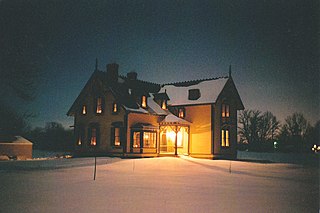
The Nicholson–Rand House is a historic house located in Decatur Township, Marion County, Indiana, in Indianapolis. It was moved half a mile south by the Historic Landmarks Foundation of Indiana (HLFI) to save it from being demolished in 1997 and added to the National Register of Historic Places (NRHP) in 2003. The house is an example of the Gothic Revival style of American architecture typified by Alexander Jackson Davis and Andrew Jackson Downing in the mid-19th century.

Hani Rashid is an architect and educator. He co-founded the New York-based architecture firm, Asymptote Architecture with Lise Anne Couture.

William Lightfoot Price was an American architect, a pioneer in the use of reinforced concrete, and a founder of the utopian communities of Arden, Delaware and Rose Valley, Pennsylvania.

Charles Rose is an American architect.

TenBerke is a New York City, based architecture and interior design firm founded and led by Deborah Berke, who concurrently serves as Dean of the Yale School of Architecture.
Evans Woollen III was an American architect who is credited for introducing the Modern and the Brutalist architecture styles to his hometown of Indianapolis, Indiana. Woollen, a fellow of the American Institute of Architects (FAIA) and a graduate of the Yale School of Architecture, was active in the field from the mid-1950s to the early 2000s. He established his own architecture firm in Indianapolis in 1955 that became known as Woollen, Molzan and Partners; it dissolved in 2011. As a pacesetter among architects in the Midwest, Woollen, dubbed the dean of Indiana architects, was noted for his use of bold materials and provocative, modern designs.

David Mohney FAIA is an American architect, urbanist, writer, and dean at Kean University and Wenzhou-Kean University.
Julie Vincenza Iovine is an American journalist who writes about architecture, and a former magazine editor. She has contributed to The New York Times and the Wall Street Journal, and has written several books.

